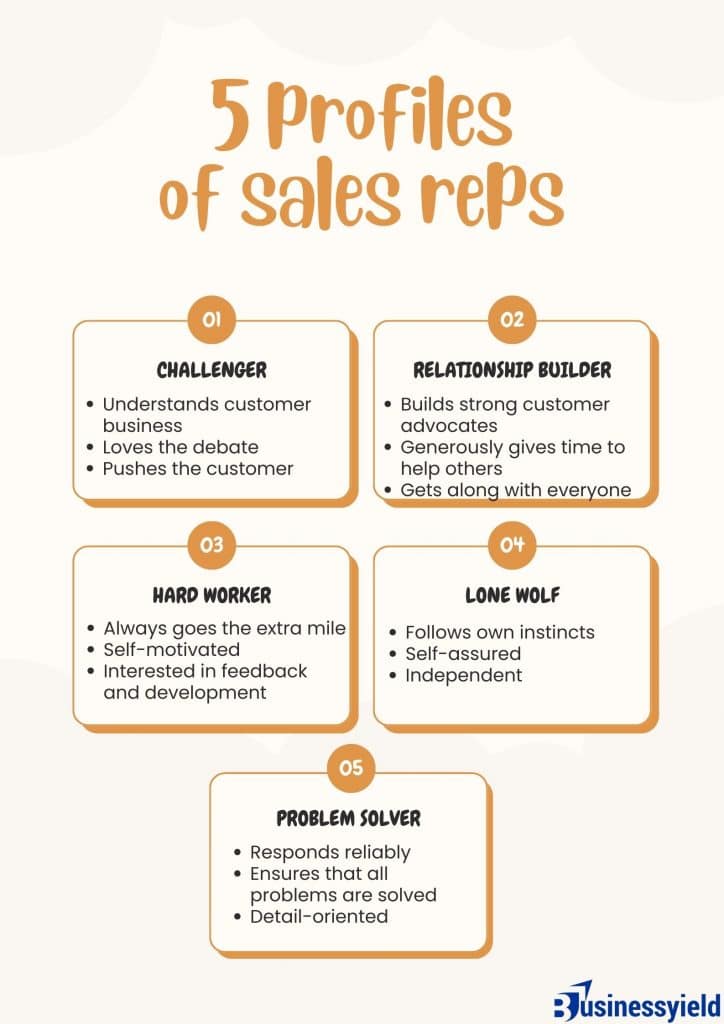When I first started my journey into sales and marketing, I had a preconceived notion of how a sales meeting with a prospective client was supposed to go. I’d first try to build a good relationship with them, from which I would then start to persuade them to buy what I was selling. And while it does sound like a reasonable strategy on paper, I found a major obstacle in the way.
Most prospects, before coming to purchase a product, have usually gone online to check it out, and already feel like they have an idea of what the product is and what they are willing to pay for it. Hence, they are more interested in ‘why’ they should buy, rather than ‘what’ they should buy.
Brent Adamson’s and Matthew Dixon’s The Challenger Sale was very instrumental in helping me make this paradigm shift. According to the book, when it comes to top-performing sales reps, building relationships is the least effective strategy in closing sales. Instead, it argues that sales reps who take control of a sale and teach their prospects how to solve their problem are more successful than salespeople who spend long amounts of time building a relationship with their lead.
This is the basis of the Challenger sales model.
Key takeaways
The Challenger Sales model is a B2B sales technique that uses thought-provoking insights, disruptive challenges, and meaningful opportunities to educate prospects.
According to the Challenger Sales model, teaching prospects how your solution can solve their problems is more efficient than investing significant time and energy in building personal relationships.
This model is distinct because it requires sellers to possess and share a deep knowledge of their prospects’ industry, specific business and solutions, potential risks, and even market opportunities.
What is the Challenger sales model?
The Challenger sales model and methodology is a sales process that focuses on teaching, tailoring, and taking control of a sales experience. The approach was first detailed in the book The Challenger Sale: Taking Control of the Customer Conversation by Matthew Dixon and Brent Adamson, and highlights the importance of guiding a group of customer decision-makers toward a certain mindset or action.
Using the Challenger sales model, Dixon and Adamson argue that, with the right sales training and sales tools, sales reps can take control of any customer conversation.
Though it’s only one of many approaches to B2B sales, the Challenger sales model is distinct because it requires you as a seller to possess and share a deep knowledge of their prospects’ industry, specific business and solutions, potential risks, and even market opportunities. This approach allows you to demonstrate your value and set your business and solutions apart from your competitors.
As a Challenger, you’ll have an in-depth understanding of your prospect’s business and their struggles. Rather than being apologetic about trying to sell to the customer, you’ll own the conversation. Rather than following a similar sales pitch, you’ll approach each prospect differently. You can then push back at the right moment to drive them toward making a decision.
While Challenger is the focus, Adamson and Dixon don’t just talk about them in the book. They also cover four other types of sales reps.
SEE: Choosing Upselling & Cross-selling Strategies to Strengthen Your Sales Approach
Types of sales reps under the Challenger sales model

Though all sales rep profiles have distinct qualities, these categories aren’t mutually exclusive. The authors clarify that you can exhibit qualities of all types or have them in any combination. Dixon, Adamson, and their colleagues researched the attitudes and behaviors of thousands of sales reps and discovered that they fall into one of five distinct profiles:
- The Challenger (You). As a Challenger, you offer a new perspective to your prospect and don’t shy away from conversations about money. You understand what brings them value and leverage that information to deliver an irresistible pitch. Your approach is customized to each prospect’s unique problems. You also find ways to tactfully pressure them.
Remember the three T’s: You teach something valuable, tailor the sales pitch, and take control of the conversation.
- The Relationship Builder. When you think of a typical salesperson, you think of the Relationship Builder. They’re patient, emotionally intelligent, and willing to go the extra mile to connect. These sales reps form bonds with gatekeepers at their target company. They then slowly try to create an internal advocate.
- The Hard Worker. The Hard Worker strives to improve their role but doesn’t necessarily focus on the customer’s value drivers. They’re strict towards work processes and meeting their sales goals.
- The Lone Wolf. The Lone Wolf is a high performer but not a team player. Confident in their selling skills, they exceed quotas but are difficult to deal with interpersonally. They don’t like collaborating, but that makes them more creative and resourceful.
- The Problem Solver. The Problem Solver is adept at finding solutions for issues in both the team and the prospect’s business. They can look into complex problems and identify solutions while keeping all stakeholders in the loop.
READ: What IS TECH SALES? Why & How You Can Get Into It
Understanding the Challenger sales model
The “Challenger Approach” correlates with increased close rates among high performers — hence, the book’s name. In the study, Adamson and Dixon found that:
- 40% of high sales performers used the Challenger style.
- High performers were over 2x more likely to use a Challenger approach over any other approach.
- More than 50% of all-star performers fit the challenger profile in complex sales.
- Only 7% of top performers took a relationship-building approach — the worst-performing profile.
One of the most important things I learned from the book was how to build up to a sale by creating constructive tension. Challengers intentionally dispute their customer’s way of thinking and force them to contemplate a new perspective. This creates some slight tension in the form of a casual debate. By encouraging their customers to consider new opportunities, I could start to offer an alternative way forward.
The Challenger sales method relies on delivering insight into an unknown problem or opportunity in the customer’s business that the supplier is uniquely positioned to solve. By using it to capture a prospect’s assumptions or beliefs and pinpoint flaws or untruths in them, I was able to offer them a better solution.
Below is a template for a sales strategy that I use along with the Challenger sales model.
BusinessYield sales strategy template
How to adopt the Challenger sales model
The foundation of the Challenger sales model is teaching prospects, as opposed to building a relationship with them. It involves creating scenarios that depict them not buying your product and the potential consequences, thereby positioning your product as a solution.
As a sales rep, you must be equipped to take control of the sale and nudge customers into making purchase decisions. You can achieve this using a five-step process:
Step 1: The warm-Up
The first step of the Challenger sales model is to build credibility with prospects using intelligent communication skills. You must show their prospects that they understand the challenges they’re facing. To do this, you must thoroughly research and investigate the prospect’s pain points, challenges, and needs.
While other selling techniques require reps to talk about what your product does, the Challenger sale method demands talking about their prospect’s needs instead. Your product is never mentioned at this stage, but rather the entire discussion should focus on the prospect’s problem.
Here is how I approach this:
- Show prospects why I’m contacting them: I talk about typical issues the prospect might be dealing with to show that I understand and can empathize.
- Prove I’m an expert: I demonstrate that I have the necessary experience to understand the prospect’s problems and what they’re dealing with.
- Get them feeling curious: I introduce any facts or research about the problem that might pique interest.
- Get interactive: I use visuals and interactive content to get the prospect involved in the discussion and uncover crucial pain points they are facing.
At this point, I am doing nothing more than having a thought-provoking conversation with them. The groundwork I put into these early conversations helps to lay the foundation for selling further down the track.
Step 2: Reframe the conversation
During the warm-up, the prospect might’ve said that their biggest problem is landing customers. Or, that their marketing costs are too high. Hence, your next action is to focus on finding the root of the prospect’s problems and reframing them as growth opportunities.
Once you dig a little deeper, you can start breaking down any misconceptions the prospect has about how they will solve the prospect’s problems. By forcing a new perspective into the conversation, the prospect should slowly begin to shift their mindset away from what they perceived to be the answer to their problems.
By the end of the conversation, you will essentially be telling the prospect that the problem-solving solution they had in mind will not work. After challenging the prospect to accept this, even only hypothetically at this point, start to reframe the conversation around better solutions. Here’s how I do this with the Challenger sales model:
- Staying on topic. I address the concerns the prospect talked about in step 1 and reiterate understanding, knowledge and expertise.
- Surprising the prospect about their misconceptions. I challenge them to shift their focus away from how they thought they could solve their problem to the new more effective methods they could use.
- Addressing the problem with confidence. Turning the conversation around like this requires a certain level of fearlessness and assurance, an essential character trait in the best sales professional. The more confident and relatable I am, the more the prospect will trust me to present alternative solutions.
Once again, the goal of this step isn’t to sell. All you should be trying to do is evoke a sense of curiosity in the prospect and get them to think in new ways.
Step 3: Use emotions
No matter how good your product is or how many features it has, emotions will still play a key role in B2B sales. According to the Challenger sales model, the more a prospect can personally relate to a product, the more likely they are to buy it.
READ: 4 Key Components To Consider When Developing Your B2B Ecommerce Strategy
A great way I used to get prospects to see personal value is by presenting them with relatable customer stories. By telling stories of customers with similar problems, I make the prospects start to see themselves as the main character and feel more connected to the product. And by showing the prospect how these other customers benefited from a new solution, I’m forcing them to picture how they could benefit, too.
Once a prospect realizes that an alternate solution could, in fact, solve their problem, it’s harder for them to go back to their old ways of thinking.
Now that the prospect is happily picturing themselves using a new solution, I take the emotional rollercoaster a step further by showing prospects what will happen if they don’t change their outlook. I do this by:
- Telling a story. The emotional impact will come from storytelling. I paint a picture of what will happen if their prospect continues down their familiar path. This story is relatable and addresses the prospect’s pain points, challenges and failing solutions.
- Using customer stories. After the above, I replace this fictional unhappy ending with real-life success stories. I make sure they are backed by case studies of people who have solved their problems using these alternative solutions. I also use visuals when telling the stories, as pictures stick in people’s minds more than words during a sales pitch or sales presentation – or even when shared over email.
- Doing research. This is where I provide invaluable insight in a way that resonates with the prospect’s concerns and aspirations. As soon as the prospect begins to picture themselves using a new solution, I back up my argument with data to rationalize my statements.
The last step is where all of the hard work starts to line up. If done right, it’s almost impossible for a prospect to see the benefits of continuing down the same path they were on before.
Step 4: The value proposition
It’s now time to show the prospect and any stakeholders the possibilities of a better future if they choose the new path laid out in front of them. Similar to other sales approaches, like SPIN selling, you should not introduce your product as the solution early on. Instead, with the Challenger sales model, focus on showing the prospect that their problem can be easily solved.
I frame these solutions by:
- Painting a picture of a positive future. In the last step, I told a story with a bad ending. Now, I flip this story to show the prospect what the future will look like if they decide to take action.
- Focusing on solutions. And nothing else. The prospect needs to start connecting the dots themselves.
- Running a marathon, not a sprint. I always take my time to explain anything the prospect is unsure about. This can help the prospect connect the dots, if absolutely necessary.
The ultimate goal in this step is to educate the prospect about what the ideal solution to their problem looks like, without ever mentioning your product. It seems counter-intuitive, but if you do this right, their prospect will sell themselves on your solution without you even having to do so.
Step 5: The product
The hard work is done. You have taken the prospect’s problem, reframed it, gained their trust and offered up a solution to solve it. The only thing left for you to do is fill in the blanks and show your prospect that you have that exact solution.
If you can follow all the steps in the process correctly, this final step should be painless and quick, because with the challenger sales model, you have already been leading the conversation from the beginning.
How you introduce your product will depend on what you’re selling. If your company is a SaaS product, you might offer your prospects a demo. If you are a web development agency, you may provide a detailed walkthrough of what working with your company would look like.
Attached below is a checklist that outlines the above steps for you to follow to adopt the Challenger sales model:
Challenger sales model checklist
Training a sales team with the challenger model
To train your sales team, you first need to recognize that results will vary from rep to rep. This depends on the type of salesperson they are. Also, not all of them will be willing to adopt this sales model.
With that said, let’s explore some ways you can teach your sales reps to adopt the Challenger Sales model. Each approach is tailored to a different sales archetype.
Coaching a Relationship Builder
Relationship builders often lose track of time and turn into “people pleasers” in pursuit of building lasting relationships. Here’s how you can train them:
- Focus on the “pressuring” and “taking control” aspects of the Challenger Sales model. Relationship Builders don’t want to rush things or feel like they’re pressing — but an essential element of Challenger Sales is pushing back and being firm.
- Teach them to become comfortable talking about money so they don’t feel they’re sacrificing the relationship when discussing prices.
- Help them become familiar with data and motivate them to use it in pitching. Relationship Builders focus on empathy and connection, but those two don’t have to live apart from complex numbers and facts.
Coaching a Hard Worker
Hard Workers push prospects out of their comfort zones to achieve results. Here’s how you can help them pitch their solutions and not appear pushy:
- Walk them through the “teaching” aspect of Challenger selling. As Hard Workers, they’re self-motivated but may skip over certain parts of the process to get the sale.
- Give them consistent feedback to help them successfully adopt the Challenger Sales model.
- Hand out praise where it’s due — Hard Workers like to be appreciated, which is a great way to motivate them.
READ: Sales Pitch: How To Write Sales Pitch (+Detailed Examples)
Coaching a Lone Wolf
The biggest issue with Lone Wolves is their lack of collaborative skills. Consider doing the following:
- Teach them how to have fruitful two-way conversations with teammates and prospects. A Lone Wolf is a highly effective sales rep, but they often do it alone and, therefore, have less effective communication skills.
- Give them a handout or a cheat sheet to remind them of the Challenger Sales method (or you could link them to this post).
- And lastly, let them figure it out on their own. As Lone Wolves, these types of sales reps thrive when they’re left alone.
Coaching a Problem Solver
Problem solvers get caught up in providing immediate fixes. They tend to leave behind strategic, long-term solutions. The following things will help them adopt the Challenger sales model:
- Bring their attention to the “offering a new perspective” aspect of Challenger Selling. In their quest to solve problems, a Problem Solver might rely on a tried and true method. Instead, they should offer a unique view to change the customer’s perspective.
- Focus on creating pitches specific to each customer’s problem; they simply can’t say no. Then, after changing the customer’s perspective, the Problem Solver will craft a specific solution that meets that prospect’s needs.
- Leverage the Problem Solver’s strong stakeholder communication skills to get buy-in from higher-ups at prospects’ organizations.
Benefits of using the challenger sales model
So, now that you understand how the Challenger model and its sales tactics work, what are the benefits of using it in a B2B sales environment?
Offers the customer a unique perspective
Instead of offering your prospects a solution that addresses their current pain points, the challenger sales methodology provides a new perspective and challenges the status quo. By doing so, customers are experiencing a hyper-personalized sales experience from your sales representative that will go above and beyond customer expectations.
Helps understand what the customer values
By building an in-depth understanding of a customer’s business and operations, you can have honest conversations and gain an understanding of what the customer values. Often, this is time, cost and resource savings. But this could also include environmentally friendly and sustainable alternatives to their current practices.
Far more likely to make a sale
The research on the challenger sales model has shown that those using this sales methodology are 370% more likely to close a sale (54% vs 11.5% average) in a complex sales situation than the other four types of sales reps.
Help your sales team stand out above the crowd
The aggressive, yet useful, nature of the challenger sales model drives a different kind of customer relationship. Often this is built on (sometimes brutal!) honesty, but it is a two-way street that can create healthier relationships and customer loyalty. While the approach can come across as pushy, your sales representative will definitely stand out among the competition.
Final word on the Challenger sales model
Challenger selling enables you to offer a unique, well-researched perspective on how your solution fits into the client’s bigger-picture goals. Rather than force-fitting a product or service into the prospect’s life, you can use the Challenger Sale method to work backward — first by understanding the customers’ reality, and then making a compelling case for exactly how their solution can improve that reality.
This will help you to build a solid relationship between the customer’s value drivers and the product or service’s value proposition.





